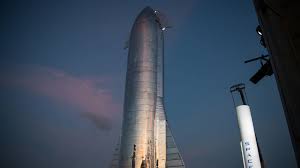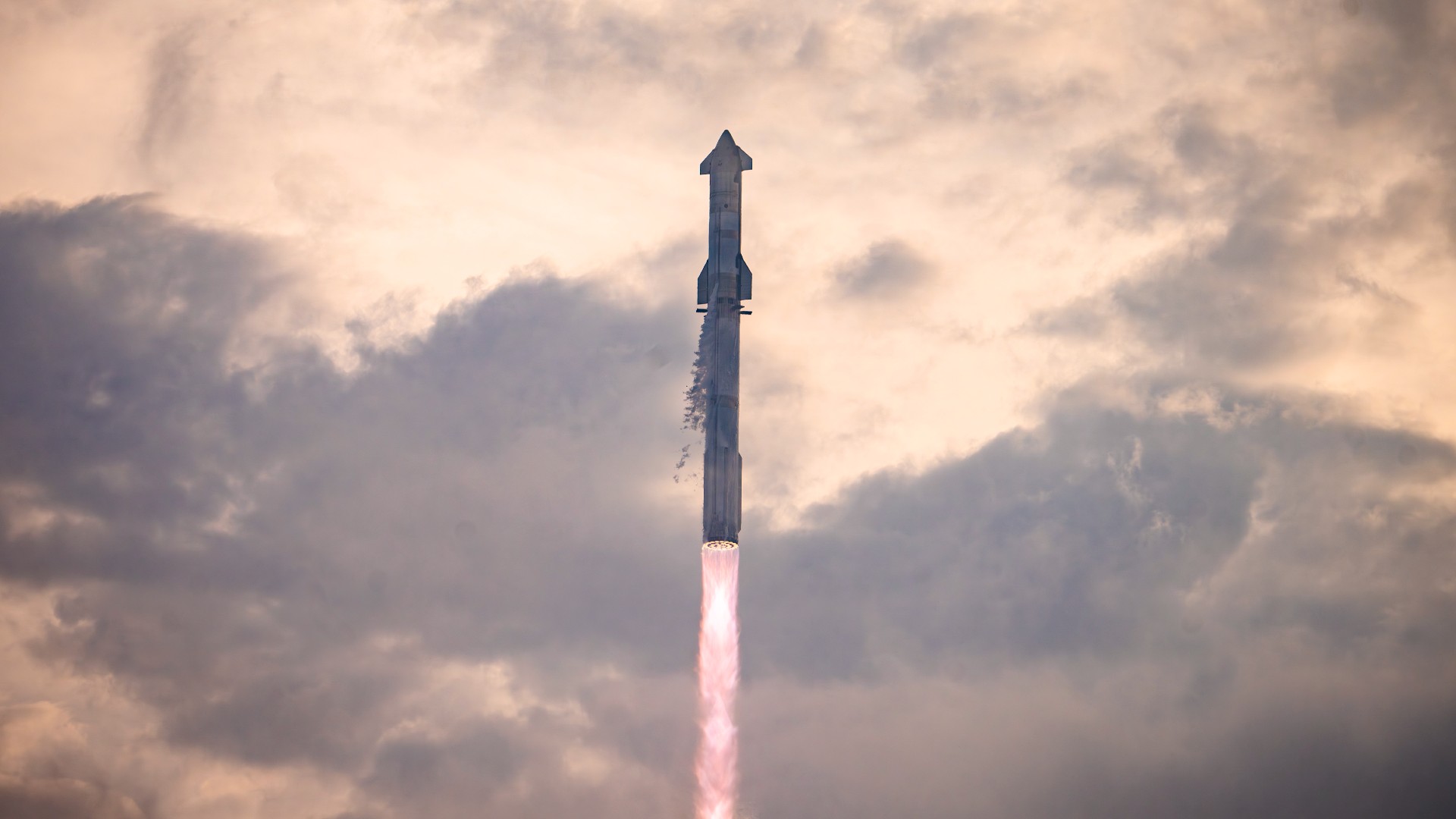Elon Musk’s SpaceX Achieves Historic Starship Launch, Mars Mission Becomes More Possible

Elon Musk’s SpaceX Achieves Historic Starship Launch, Mars Mission Becomes More Possible
Introduction: In a historic moment for space exploration, Elon Musk’s SpaceX has successfully launched its Starship rocket, bringing humanity’s dream of reaching Mars one step closer to reality. The launch marks a significant achievement for SpaceX, a company that has already revolutionized the space industry with its reusable rockets and commercial space ventures. But this launch is different—it signals the beginning of SpaceX’s ambition to send humans to Mars and ultimately establish a permanent presence on the Red Planet. The success of Starship could pave the way for interplanetary exploration and colonization, setting the stage for a new era in space travel. In this article, we examine the significance of this historic Starship launch, the capabilities it brings, and the broader implications it has for future Mars missions.
The Significance of the Starship Launch: The successful launch of Starship is more than just a technical achievement; it represents a major milestone in Elon Musk’s vision of a multi-planetary future for humanity. Starship, designed by SpaceX, is an entirely new kind of spacecraft that is far larger and more capable than any rocket currently in operation. Unlike traditional rockets, Starship is fully reusable, designed to carry both crew and cargo to destinations beyond Earth, including Mars, the Moon, and possibly even the outer planets in the future.
Musk’s goal with Starship is not only to make space travel more affordable but also to enable deep-space missions and long-term human settlement on Mars. The rocket’s launch is a crucial step in demonstrating that it is capable of performing these tasks. With its impressive payload capacity, advanced reusability, and the ability to carry large crews and essential supplies, Starship is poised to be the vehicle that will carry the first humans to Mars.
The Starship launch follows years of testing, development, and failures, making its success all the more significant. SpaceX has repeatedly proven its resilience in the face of setbacks, and with this achievement, the company has once again demonstrated its ability to push the boundaries of space exploration.
Starship: The Vehicle Designed for Mars Colonization Starship is more than just a rocket; it is the key to making Musk’s Mars colonization plans a reality. Built to be fully reusable, the spacecraft is designed to carry up to 100 passengers at a time, along with the necessary cargo for long-duration missions. Its large size and ability to return to Earth after completing missions make it an ideal vehicle for Mars expeditions.
The spacecraft is designed for long-haul space travel, with capabilities that go far beyond anything currently available. It features an innovative heat shield for re-entry, a large cargo bay, and a life support system capable of sustaining astronauts during lengthy space voyages. This reusability makes Starship more cost-effective than traditional spacecraft, as it can be used for multiple missions without the need for expensive and time-consuming rebuilding between flights.
Starship’s long-term goal is to transport humans to Mars and create a sustainable human presence on the planet. Musk’s vision is to establish a self-sustaining colony on Mars that will not only serve as a backup for humanity but also act as a hub for space exploration beyond Earth. While SpaceX has already launched numerous successful missions using its Falcon rockets, Starship represents the next step in making interplanetary travel and Mars colonization a reality.
The Road Ahead: Challenges and Opportunities for Mars Missions While the Starship launch is a significant step forward, there are still many challenges to overcome before humans can actually live on Mars. The first challenge is the development of infrastructure on Mars that can support human life. SpaceX’s mission to Mars is not just about getting people to the planet—it’s about ensuring that they can survive and thrive once they arrive.
Creating sustainable habitats on Mars, where humans can live, grow food, and produce energy, will be crucial for the long-term success of the mission. SpaceX and Musk’s vision for Mars colonization include plans for building self-sustaining habitats, as well as systems to generate water, oxygen, and food using the planet’s natural resources. The technology to accomplish this is still in development, but the launch of Starship brings Musk’s dream one step closer to becoming a reality.
In addition to developing infrastructure, SpaceX will need to address the challenges of interplanetary travel itself. The journey to Mars takes several months, and astronauts will face significant physical and psychological challenges due to the long duration of the mission. SpaceX will need to ensure that Starship’s life support systems are capable of maintaining crew health and safety during the long journey. Moreover, technologies like radiation shielding and deep-space navigation will be essential to protect astronauts from the harsh environment of space.
Another challenge that Musk faces is the cost of Mars missions. While Starship’s reusability is a major advantage in reducing costs, funding the construction of the spacecraft, as well as the infrastructure needed on Mars, will require significant investment. Musk has hinted that the cost of missions to Mars will decrease over time as Starship’s technology matures and more vehicles are launched. But for now, the financial burden remains one of the largest obstacles to achieving the vision of Mars colonization.
The Broader Impact of Starship on Space Exploration: The success of the Starship launch has far-reaching implications beyond just Mars missions. Starship’s size, capabilities, and reusability will revolutionize space travel, making it more accessible and affordable. The rocket’s ability to carry large payloads and passengers will enable a new era of space exploration, not just for Mars, but for the entire solar system.
One of the key features of Starship is its ability to carry a variety of payloads, from satellites to scientific instruments, in addition to passengers. This versatility makes Starship an ideal vehicle for future space exploration missions, including sending probes to distant planets, moons, and asteroids. The spacecraft could also play a key role in lunar exploration, with NASA’s Artemis program planning to use SpaceX’s Starship to land astronauts on the Moon.
Starship’s reusability will also allow for more frequent and cost-effective space missions, making space more accessible to both government agencies and private companies. The lower cost of space travel could lead to a significant increase in commercial space ventures, such as space tourism, satellite deployment, and research missions, further driving innovation and economic growth in the space industry.
The Future of SpaceX and Mars Colonization SpaceX’s successful Starship launch has marked a major milestone, but there is still much work to be done before humans can live on Mars. Musk’s ultimate goal is to make humanity a multi-planetary species, ensuring that Earth is not the only home for humanity. With Starship, SpaceX is laying the groundwork for this future, but the journey to Mars will require continued innovation, collaboration, and investment.
As SpaceX continues to refine Starship’s design and develop the technology needed for Mars missions, the company will also work on building the necessary infrastructure to make human life on Mars a reality. The next steps include additional test flights, refining life support systems, and developing technologies for in-situ resource utilization on Mars. Musk’s dream of a thriving human colony on Mars may still be years, or even decades, away, but the successful launch of Starship is an important step toward achieving that goal.
Conclusion: Elon Musk’s SpaceX has achieved a historic milestone with the successful launch of Starship, bringing humanity’s dream of Mars colonization one step closer to reality. Starship’s advanced technology, reusability, and versatility make it the key to long-term space missions and interplanetary exploration. While significant challenges remain, such as developing sustainable habitats on Mars and reducing mission costs, Musk’s vision for a multi-planetary future is becoming increasingly attainable. The Starship launch is not just a triumph for SpaceX—it is a testament to the power of innovation, ambition, and the relentless pursuit of human progress in space exploration. As SpaceX continues to build on this success, the dream of human life on Mars may one day become a reality, marking a new chapter in the history of space exploration.









